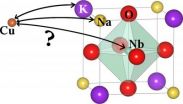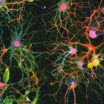(Press-News.org) OAKLAND, Calif. – Compared to women never on hormone therapy, those taking hormone therapy only at midlife had a 26 percent decreased risk of dementia; while women taking HT only in late life had a 48 percent increased risk of dementia, according to Kaiser Permanente researchers.
Women taking HT at both midlife (mean age 48.7 years) and late life had a similar risk of dementia as women not on HT, according to the study which appears in the Annals of Neurology. The study was funded in part by the National Institutes of Health.
Although previous research has shown that initiation of postmenopausal estrogen hormone therapy in late life increases the risk of dementia, animal studies and some observational studies have suggested that midlife use of HT may be beneficial. This is the first observational, long-term study to directly compare the effect of hormone therapy status in both midlife and late life on risk of dementia.
"This study is unique because we had a group of women who were on HT in midlife only and could look at their dementia risk over time, and we found a modest, protective association. We also found that if you start HT late in life, you have a 50 percent increased risk of dementia, which is consistent with other studies," said study lead author Rachel Whitmer, PhD, a research scientist with the Kaiser Permanente Division of Research in Oakland, Calif. "Women should speak with their doctor about what's best for their individual situation, however it appears from this study that women who are on short-term HT in midlife may benefit from a modest protective association, while initiation in late-life can cause harm."
Researchers conducted an observational cohort study of long-term female members of Kaiser Permanente in Northern California who participated in periodic multiphasic health check-ups that were part of routine medical care in San Francisco and Oakland between 1964 and 1973, when they were 40-55 years old.
HT use was determined at midlife (mean age 48.7 years) from a survey in 1964 and in late life (mean age 76) using pharmacy databases from 1994 to 1998. Risk of dementia diagnosis was evaluated with inpatient and outpatient diagnoses made in neurology, neuropsychology and internal medicine from 1999 to 2008. A total of 1,524 women were diagnosed with dementia during the follow-up period.
Adjustment for high cholesterol, hypertension and stroke did not reduce the magnitude of the effect of late life HT on increased risk of dementia, according to the researchers. It's also possible that in the group of women who used HT both in midlife and late life; the potential modest benefit of midlife use was counteracted by a negative effect of late life use, they explained.
This study is part of an ongoing body of research at Kaiser Permanente to better understand the modifiable risk factors for dementia. Dr. Whitmer has led several dementia-related studies that utilize multiphasic health data collected in the 1960s and 1970s by Kaiser Permanente Health Information Technology pioneer Dr. Morris Collen on thousands of Kaiser Permanente Northern California men and women during routine health check-ups. That multiphasic data used for research studies decades later has revealed these key findings: heavy smoking in midlife is associated with a 157 percent increased risk of developing Alzheimer's disease and a 172 percent increased risk of developing vascular dementia; a larger abdomen in midlife increases risk of late-life dementia; and elevated cholesterol levels in midlife significantly increase the risk of Alzheimer's disease and vascular dementia later in life. Another study by Dr. Whitmer showed that low blood sugar events in elderly patients with type 2 diabetes increase their risk for dementia. A study led by Valerie Crooks of Kaiser Permanente in Southern California found that having a strong social network of friends and family appears to decrease the risk of dementia.
Limitations of this most recent study include the fact that HT information in midlife was self-reported and therefore researchers do not know the dose or type of HT involved. Also, because the pharmacy database was initiated in 1994, researchers do not have information on the duration of midlife HT.
###
Co-authors of the paper include Charles P. Quesenberry, PhD, and Jufen Zhou, MS, both with the Kaiser Permanente Division of Research, and Kristin Yaffe, MD, with the UC San Francisco department of psychiatry and the San Francisco VA Medical Center.
About Kaiser Permanente Division of Research
The Kaiser Permanente Division of Research conducts, publishes, and disseminates epidemiologic and health services research to improve the health and medical care of Kaiser Permanente members and the society at large. It seeks to understand the determinants of illness and well-being and to improve the quality and cost-effectiveness of health care. Currently, DOR's 500-plus staff is working on more than 250 epidemiological and health services research projects. For more information, visit www.dor.kaiser.org.
About Kaiser Permanente
Kaiser Permanente is committed to helping shape the future of health care. We are recognized as one of America's leading health care providers and not-for-profit health plans. Founded in 1945, our mission is to provide high-quality, affordable health care services and to improve the health of our members and the communities we serve. We currently serve 8.6 million members in nine states and the District of Columbia. Care for members and patients is focused on their total health and guided by their personal physicians, specialists and team of caregivers. Our expert and caring medical teams are empowered and supported by industry-leading technology advances and tools for health promotion, disease prevention, state-of-the art care delivery and world-class chronic disease management. Kaiser Permanente is dedicated to care innovations, clinical research, health education and the support of community health. For more information, visit www.kp.org/newscenter.
END
A protein known to exist in the brain for more than 30 years, called 5-lipoxygenase, has been found to play a regulatory role in the formation of the amyloid beta in the brain, the major component of plaques implicated in the development of Alzheimer's disease, according to researchers at Temple University's School of Medicine.
The researchers also found that inhibitors of this protein currently used to control asthma could possibly be used to prevent or treat Alzheimer's disease.
The researchers published their findings, "5-Lipoxygenase as Endogenous Modulator of Amyloid ...
Retinitis pigmentosa is an inherited eye disorder characterized by progressive loss of vision that in many instances leads to legal blindness at the end stage.
In a ChIP-Seq based approach, the researchers identified a key regulatory role of the transcription factor Crx (Cone-rod homeobox) in the expression of retina-specific genes and thus described an important genetic basis for visual perception. In-depth analysis of Crx mediated regulation in photoreceptors with latest technology provided by Genomatix lead then to the identification of nonsense mutations in the human ...
New stars are born in the Universe around the clock – on the Milky Way, currently about ten per year. From the birth rate in the past, we can generally calculate how populated space should actually be. But the problem is that the results of such calculations do not match our actual observations. "There should actually be a lot more stars that we can see," says Dr. Jan Pflamm-Altenburg, astrophysicist at the Argelander-Institut für Astronomie of the University of Bonn.
So, where are those stars?
For years, astronomers worldwide have been looking for a plausible explanation ...
The casting sessions aren't just for movie stars, but what is involved in casting decisions that can launch fashion models to fame – or at the very least – to land a job? Stephanie Sadre-Orafai, a University of Cincinnati assistant professor and socio-cultural anthropologist, spent 11 months of fieldwork at a premiere casting agency in New York to uncover the decisions that happen behind the scenes of the glossy photos and slick commercials. Her research, "Polaroids and Go-Sees: Casting Encounters, Casting Epistemologies," was presented Nov. 17 at the 109th annual meeting ...
HOUSTON – (Nov. 18, 2010) – Discovery of a fifth gene defect and the identification of 47 DNA regions linked to thoracic aortic disease are the subject of studies released this month involving researchers at The University of Texas Health Science Center at Houston (UTHealth).
In both studies, the investigators have identified alterations in the genetic material or DNA that affect the ability of smooth muscle cells, which line the aorta and other blood vessels, to contract. This can lead to a weakening of the wall of the aorta, the main blood vessel leading out of the ...
Technical progress in the automobile industry is unbroken. But, the sector has still some hard nuts to crack: "Lead-free materials" is one of the challenges – hidden behind this challenge is a EU environmental directive which, based on a step-by-step plan, gradually bans all lead-containing materials and components from automotive vehicles – such as piezoelectric components. These elements are important for diesel engine injectors, for example, which control the supply of fuel to the combustion chamber.
The problem: Up to now lead-zirconate-titanate (PZT) is the material ...
A short push on the light switch – and the whole ceiling lights up in a uniform and pleasant color. This "illuminated sky" is not available as yet, but researchers from all over the world are working on it flat out. The technology behind this marvel is based on organic light-emitting diodes, or OLEDs for short. These diodes use special molecules to emit light as soon as current passes through them. Although the first OLEDs have only recently become available, they are small and expensive. A flat disk with a diameter of eight centimeters costs around Euro 250. Experts of ...
Scientists at Johns Hopkins have identified a compound that could be used to starve cancers of their sugar-based building blocks. The compound, called a glutaminase inhibitor, has been tested on laboratory-cultured, sugar-hungry brain cancer cells and, the scientists say, may have the potential to be used for many types of primary brain tumors.
The Johns Hopkins scientists, are inventors on patent applications related to the discovery, caution that glutaminase inhibitors have not been tested in animals or humans, but their findings may spark new interest in the glutaminase ...
PHILADELPHIA – Cells have their own version of the cut-and-paste editing function called splicing. Researchers at the University of Pennsylvania School of Medicine have documented a novel form of splicing in the cytoplasm of a nerve cell, which dictates a special form of a potassium channel protein in the outer membrane. The channel protein is found in the dendrites of hippocampus cells -- the seat of memory, learning, and spatial navigation -- and is involved in coordinating the electrical firing of nerve cells. Dendrites, which branch from the cell body of the neuron, ...
Montreal, November 18, 2010 – Schizophrenia is a mental disorder that differs between the sexes in terms of age at onset, symptomatology, response to medication, and structural brain abnormalities. Now, a new study from the Université de Montréal shows that there is gender difference between men and women's mental ability – with women performing better than men. These findings, published recently in, Schizophrenia Research, have implications for the more than 300 000 affected Canadians.
"We are the first to report sex differences in brain function of schizophrenics," ...


